Topic outline
-
-
-
Static electricity is usually caused by two objects rubbing together. and can be defined as: an imbalance of electric charges within or on the surface of a material or between materials. The charge remains until it can move away by means of an electric current or electrical discharge.
It works because everything is made of atoms.
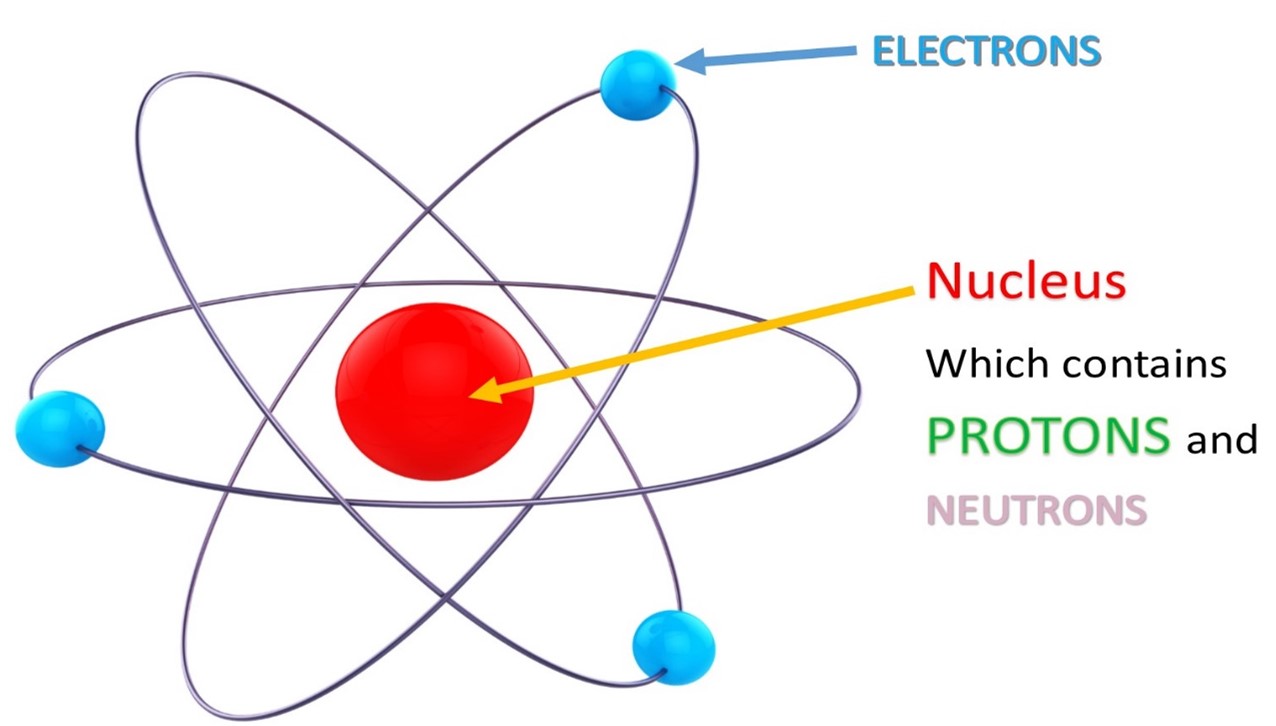
Figure 1: Atoms are made of electrons which have a negative charge, protons which have a positive charge and neutrons which have a neutral charge. Usually there are an equal number of electrons and protons which gives an object a neutral charge.
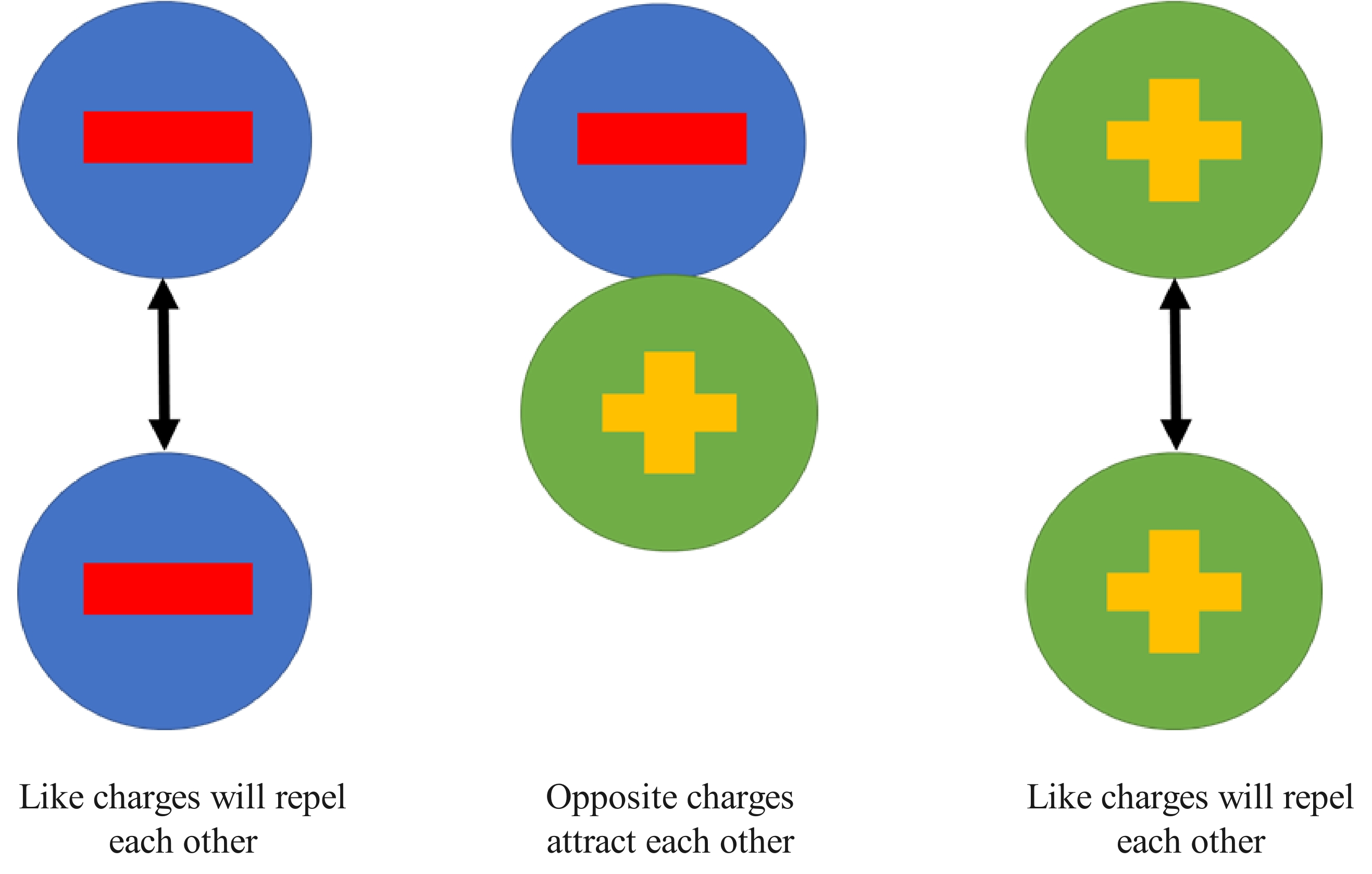
Figure 2: In an atom the protons are attracted to the electrons and vice versa because opposites attract. Electrons will repel electrons and protons will repel protons because like charges will repel each other.
Usually there are an equal number of electrons and protons which gives an object a neutral charge. Static electricity is caused by an imbalance of those charges.
How do we know there are two types of electric charge? When various materials are rubbed together in controlled ways, certain combinations of materials always produce one type of charge on one material and the opposite type on the other. By convention, we call one type of charge “positive”, and the other type “negative.” For example, when glass is rubbed with silk, the glass becomes positively charged and the silk negatively charged. Since the glass and silk have opposite charges, they attract one another like clothes that have rubbed together in a dryer. Two glass rods rubbed with silk in this manner will repel one another, since each rod has positive charge on it. Similarly, two silk cloths so rubbed will repel, since both cloths have negative charge. Figure 2 shows how these simple materials can be used to explore the nature of the force between charges.

Figure 3: A glass rod becomes positively charged when rubbed with silk, while the silk becomes negatively charged. (a) The glass rod is attracted to the silk because their charges are opposite. (b) Two similarly charged glass rods repel. (c) Two similarly charged silk cloths repel.
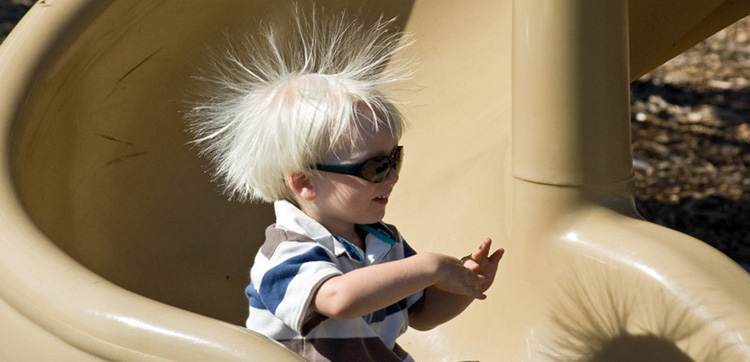
Figure 4: As the child slides down the slide a static charge builds up in his hair which causes his hair to stand up.
You can try this: take a plastic ruler and rub it several times on someone's hair. Does it stick up?
The ruler will have an overall negative charge and the persons hair will have an overall positive charge. Each hair will repel other hairs because they have the same charge.
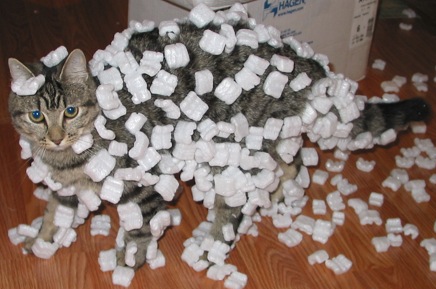
Figure 5: Styrofoam peanuts clinging to a cat's fur due to static electricity.
These charges can build up on the surface of an object until they find a way to be released or discharged. One way to discharge them is through a circuit.
When you jump on a trampoline or rub your socks on a carpet, you build up extra electrons and they will discharge when you touch something which will conduct electricity.
Important points to remember:
Whenever charge is created or destroyed, equal amounts of positive and negative are involved.
Both positive and negative charges exist in neutral objects and can be separated by rubbing one object with another. Negatively charged means an excess of electrons and positively charged means a depletion of electrons.
Methods of Charging
The following methods can charge a body by friction:
By rubbing two bodies together, both positive and negative charges in equal amounts appear simultaneously due to the transfer of electrons from one body to the other.
- A glass rod rubbed with silk makes the rod positively charged and silk negatively charged. The decrease in the mass of the glass rod is equal to the total mass of electrons lost by it.
- Ebonite (a type of plastic) on rubbing with wool becomes negatively charged, and the wool becomes positively charged.
- William Gilbert observed that when two glass rods, each rubbed against silk, are brought closer, they repel each other. Similarly, two ebonite rods rubbed against the cat’s skin repel each other. On the other hand, a glass rod rubbed against silk, and an ebonite rod rubbed against a cat’s skin on being brought closer attracts each other.
- Clouds also get charged by friction.
- A comb moving through dry hair gets electrically charged. It starts attracting small bits of paper.
- During landing or take-off, the tyres of an aircraft get electrified; therefore, special material is used to manufacture them.
- A truck carrying explosives has a metal chain touching the ground to conduct the charge produced by friction.
Activity 1
1. Click on the link below.
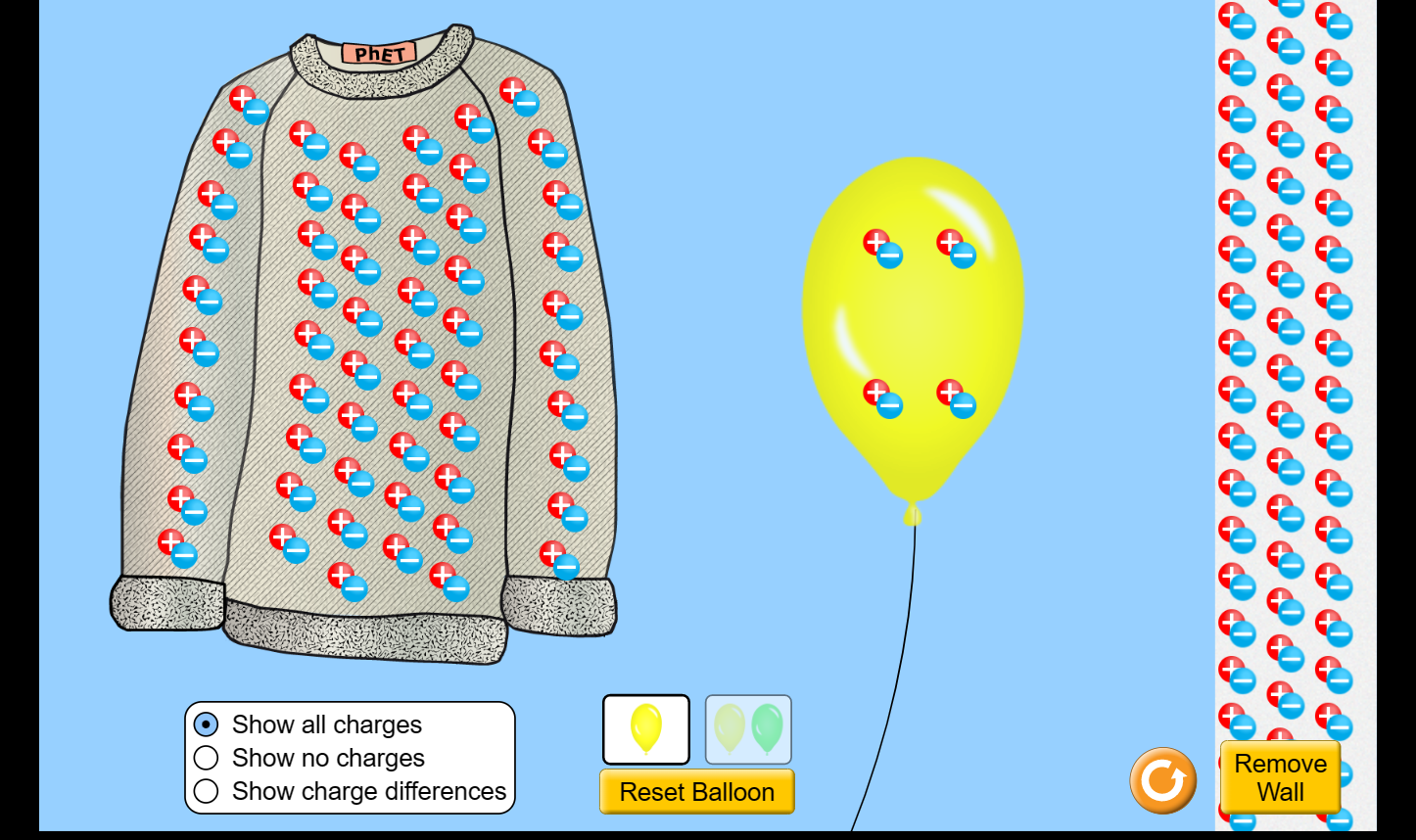
2. Move the balloon close to the sleeve of the jersey and observe what happens.
3. Now rub the balloon over the jersey. Can you see how the balloon 'collects' the negative charges?
4. Move the balloon over to the wall and observe what happens.
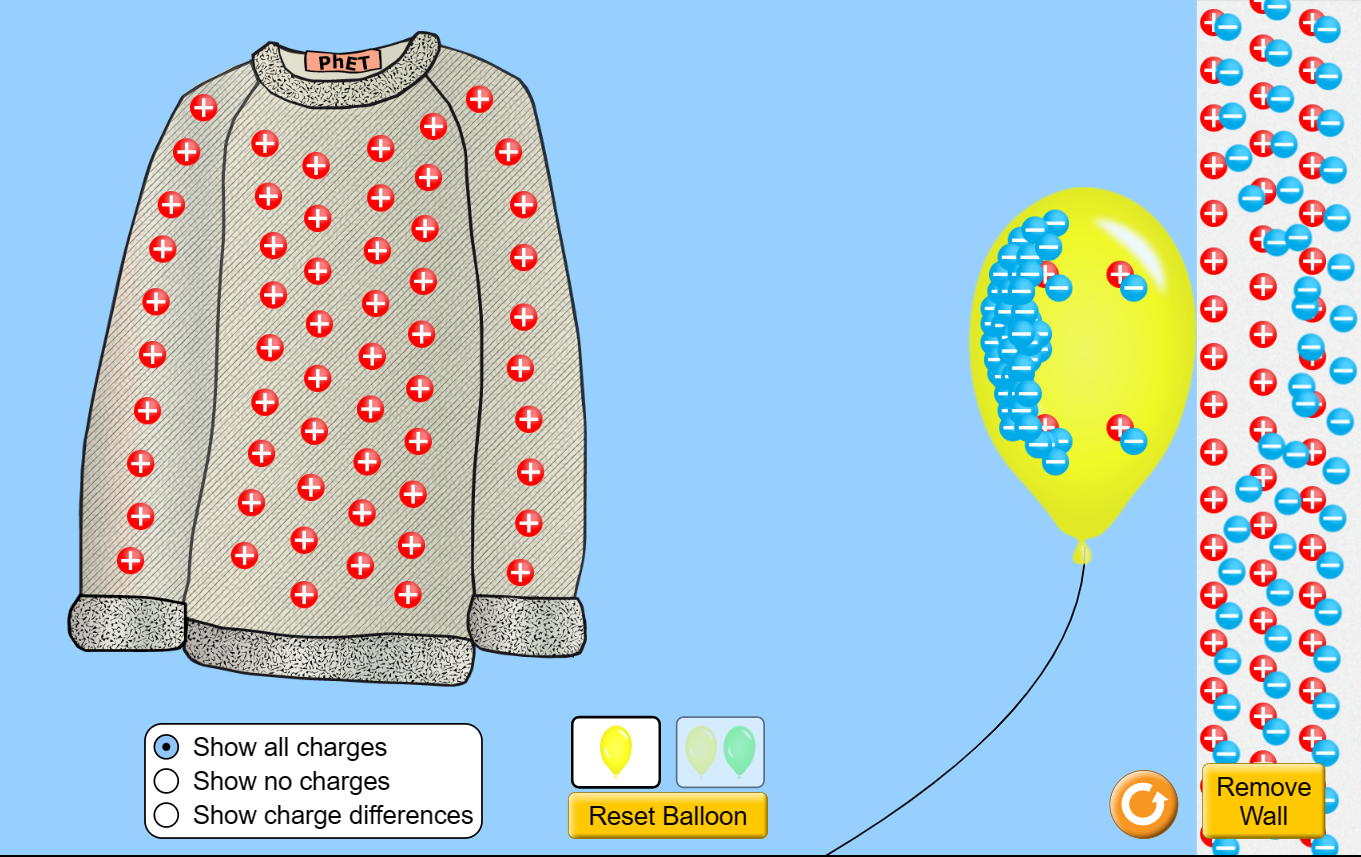
Because you rubbed the balloon on the surface of the jersey, it now has an overall negative charge. When you place the balloon on the wall, the negative charges in the wall are repelled, the negative charges in the balloon are attracted to the positive charges in the wall and the balloon will stick to the wall.
You can also try this: Take a blown-up balloon, rub it on a jersey or a cloth, and stick it on the wall.
Activity 2
1. Click on the link below:
https://phet.colorado.edu/sims/html/john-travoltage/latest/john-travoltage_en.html
2. Rub Johns leg on the rug. Do you see the electrons gathering on his body?
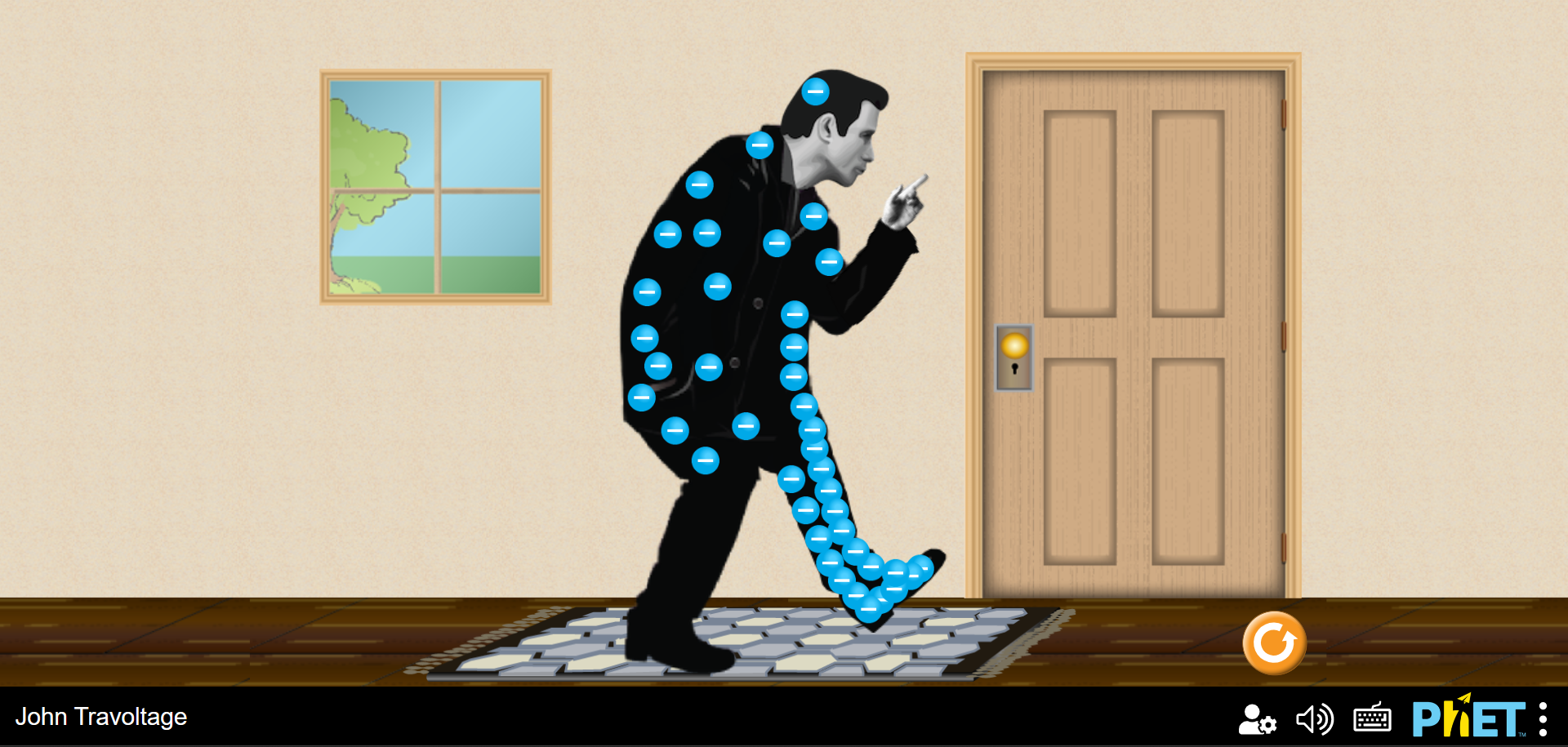
3. Place his finger near the metal doorknob. What happens?
The static electricity buildup discharges when the finger comes into contact with the metal doorknob.
-
-
-
Some substances, such as metals and salty water, allow charges to move through them easily. These free electrons can move through the material. Salty water and other similar conducting materials contain free ions that can move through them.
An ion is an atom or molecule having a positive or negative total charge. In other words, the total number of electrons is not equal to the total number of protons.
Other substances, such as glass, do not allow charges to move through them.
The gold leaf electroscope
This is an instrument for detecting and measuring static electricity or voltage.
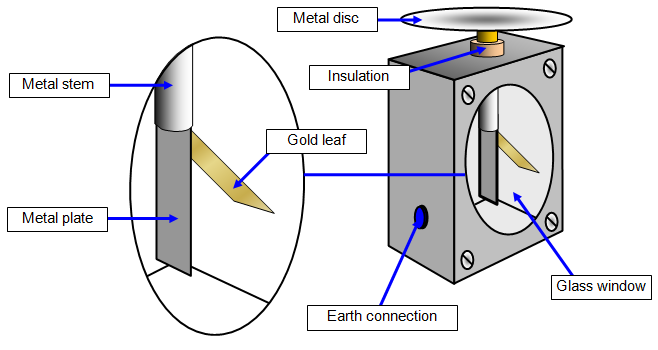
Figure 1: A metal disc is connected to a narrow metal plate and a thin piece of gold leaf is fixed to the plate. The whole of this part of the electroscope is insulated from the body of the instrument. A glass front prevents air draughts but allows you to watch the behaviour of the leaf.
When a charge is put on the disc at the top it spreads down to the plate and leaf. This means that both the leaf and plate will have the same charge. Similar charges repel each other and so the leaf rises away from the plate - the bigger the charge the more the leaf rises.
T
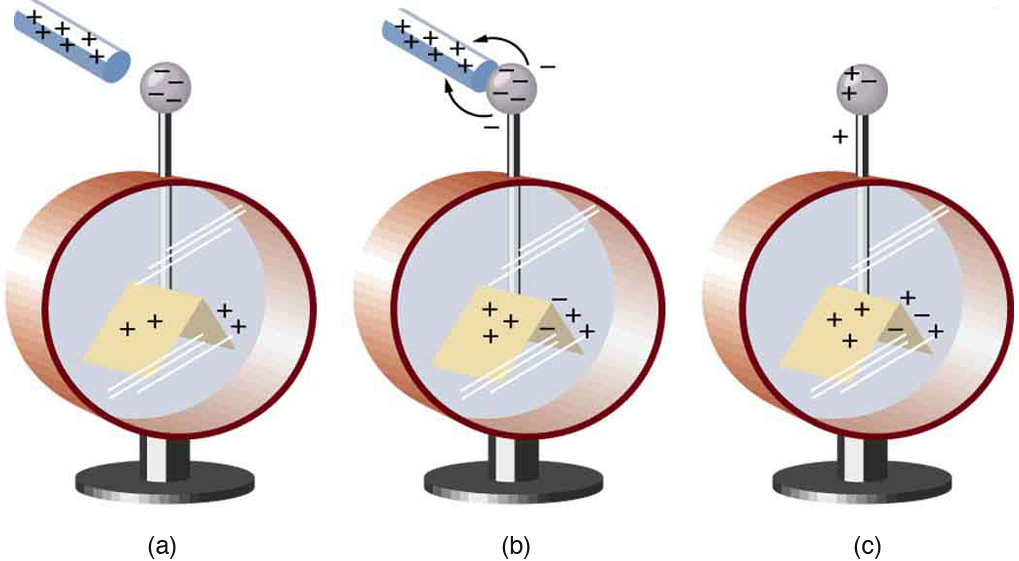
Figure 2: (a) A positively charged glass rod is brought near the tip of the electroscope, attracting electrons to the top and leaving a net positive charge on the leaves. Like charges in the light flexible gold leaves repel, separating them.
(b) When the rod is touched against the ball, electrons are attracted and transferred, reducing the net charge on the glass rod but leaving the electroscope positively charged.
(c) The excess charges are evenly distributed in the stem and leaves of the electroscope once the glass rod is removed.
The leaf can be made to fall again by touching the disc - you have earthed the electroscope. An earth terminal prevents the case from becoming live. The electroscope can be charged in two ways:
- by contact - a charged rod is touched on the surface of the disc and some of the charge is transferred to the electroscope. This is not a very effective method of charging the electroscope.
- (b) by induction - a charged rod is brought up to the disc and then the electroscope is earthed, the rod is then removed.
The two methods give the gold leaf opposite charges. Electrostatic repulsion in the leaves of the charged electroscope separates them.
Since only electrons move in metals, we see that they are attracted to the top of the electroscope. There, some are transferred to the positive rod by touch, leaving the electroscope with a net positive charge.
-
-
-
Conductors
Some materials let electricity pass through them easily. These materials are known as electrical conductors.
Many metals, such as copper, iron, and steel, are good electrical conductors. That is why the parts of electrical objects that need to let electricity pass through are always made of metal.
Metal is used in plugs to allow electricity to transfer from the wall socket, through the plug, and into a device such as a radio or TV.
In a light bulb, the metal filament conducts electricity and causes the light bulb to light up.
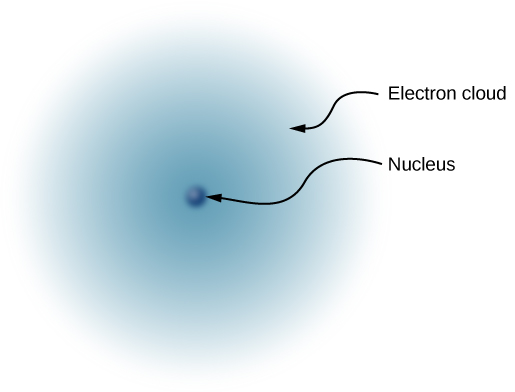
Figure 1: An electron cloud showing that electrons do not have a fixed position in the space around the nucleus of an atom.
In a large mass of copper atoms (such as a copper wire or a sheet of copper), there are vast numbers of outermost electrons (one per atom) which wander from atom to atom and are the electrons that do the moving when electricity flows. These wandering, or “free,” electrons are called conduction electrons, and copper is therefore an excellent conductor of electric charge.
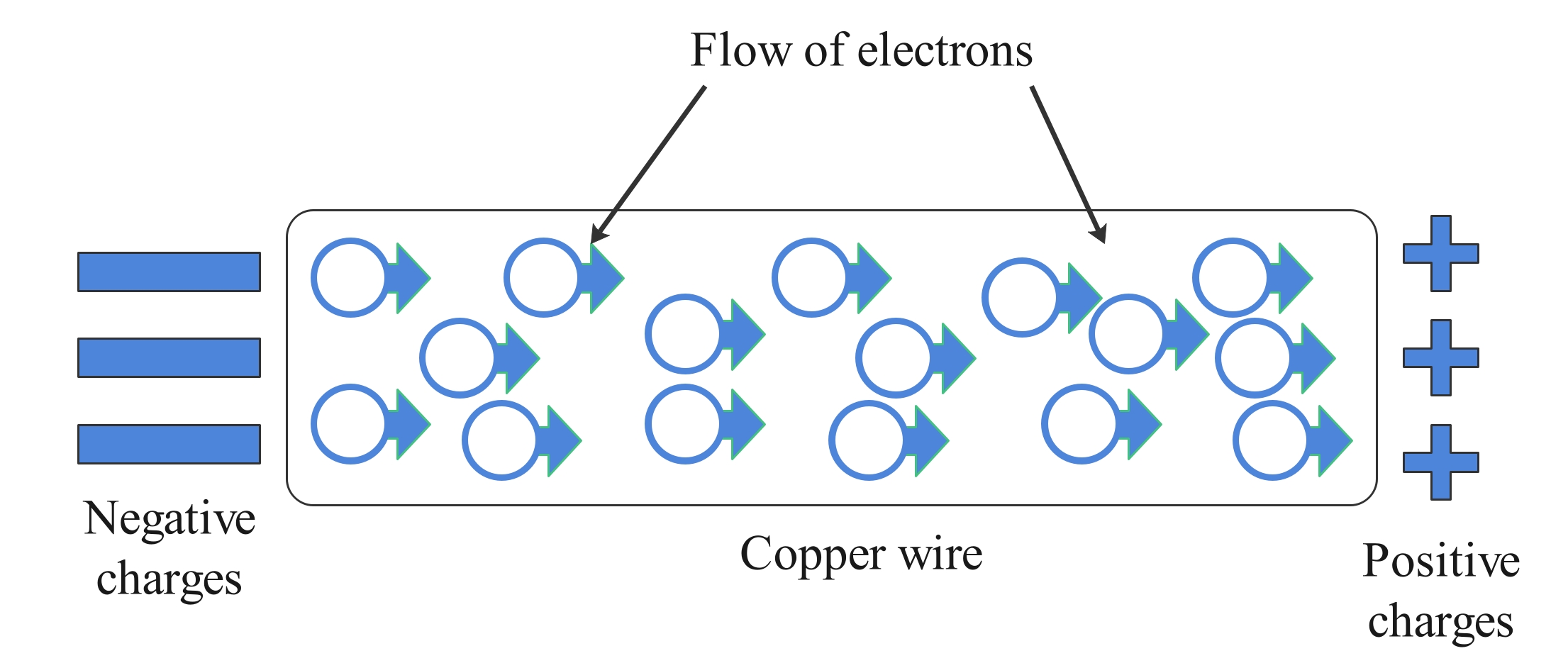
Figure 2: Electricity is the flow or movement of free electrons through a conducting material, such as a metal wire, toward an area of positive electric charges.
All conducting elements have a similar arrangement of their electrons, with one or two conduction electrons. This includes most metals.
Insulators
Some materials do not allow electricity to pass through them. These materials are known as electrical insulators.
Plastic, wood, glass and rubber are good electrical insulators. That is why they are used to cover materials that carry electricity.

Figure 3: The plastic covering that surround the wires is an electrical insulator. It stops you from getting an electrical shock.
Insulators are made from materials that lack conduction electrons. Even if excess charge is added to an insulating material, it cannot move, remaining indefinitely in place.
Charge cannot flow along or through an insulator, so its electric forces remain for long periods of time. Charge will dissipate from an insulator, given enough time.
Graphite is the only nonmetal which is a conductor of electricity.
Other carriers of current
Electrons are not the only carriers of electric current. Many important electric currents, including the currents along the nerve fibers in your brain and body at work right now, are propagated by ions, atoms or molecules that contain more or fewer electrons than the number of protons, so they have a non-zero charge.
Activity 1
1. Click on the link below:
2. Using the components on the left-hand side, construct a circuit with a bulb, battery, and wires. When connecting the bulb, connect the wire to the red circle on the side of the bulb.
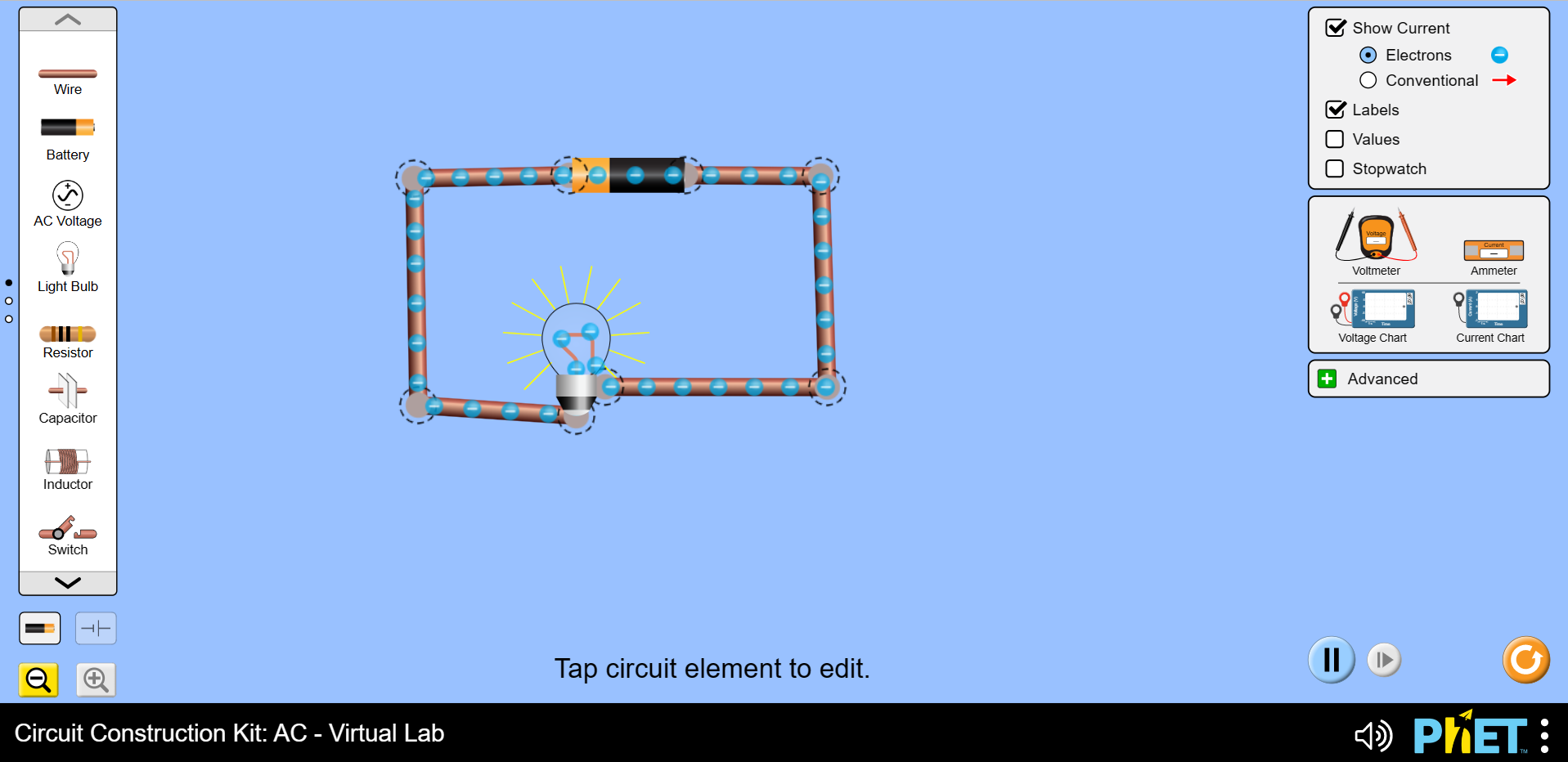
Can you see the flow of electrons in the circuit.
3. Remove the wire connecting the bulb to the rest of the circuit. Scroll through the list of components until you find the coin, hand, eraser, pencil, and dollar bill. Place each component in turn into the circuit. Make a note of which components allow the current to flow and which do not.
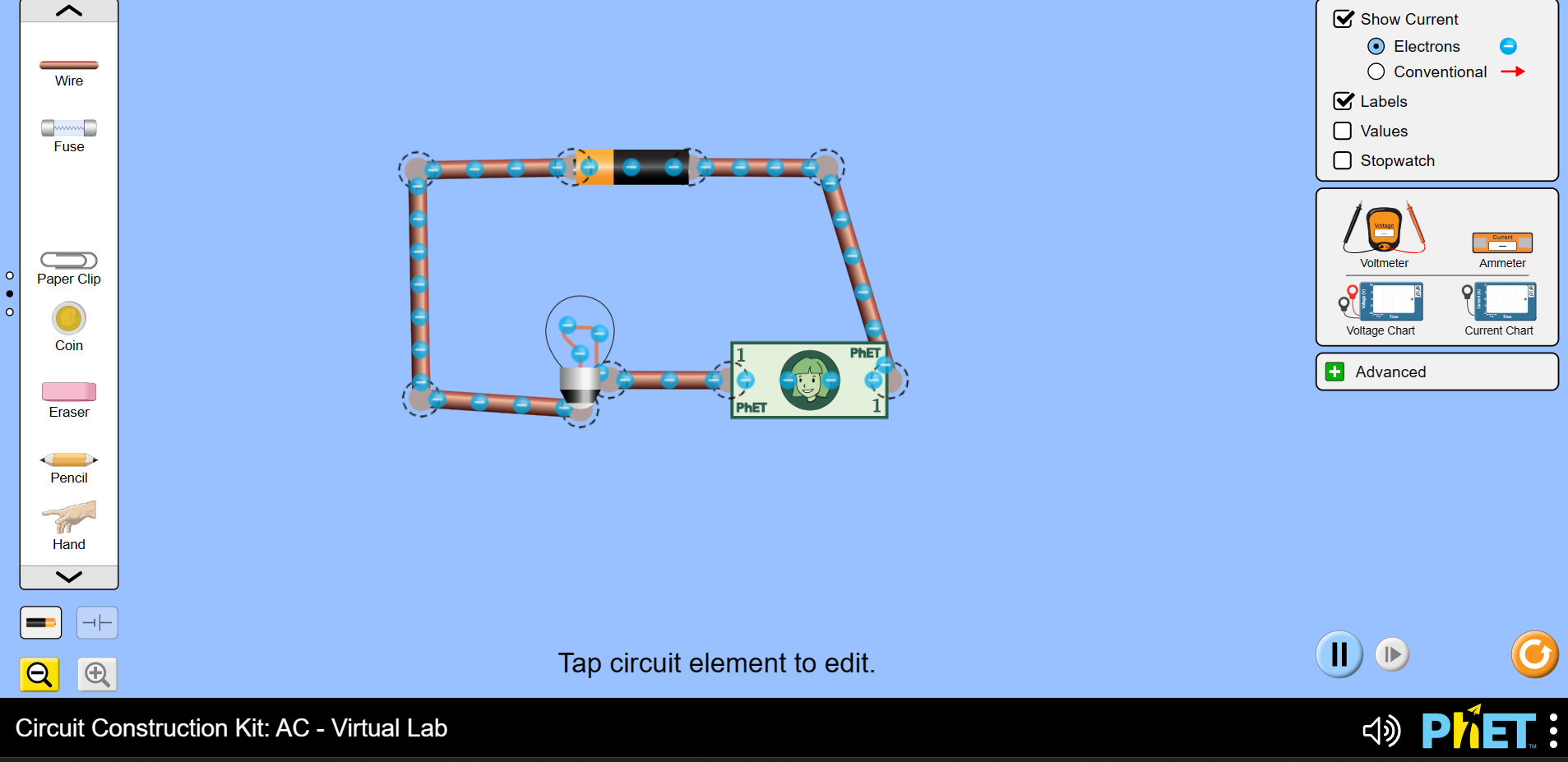
Conclusion:
Insulators: the paper money dollar bill, the eraser, the dog, and the hand, do not conduct electricity.
The paper clip, coin, and the pencil will conduct electricity because they are conductors of electricity. The paper clip and coin are made of metal. The pencil is made from graphite, which is the only nonmetal which conducts electricity.
-
-
-
A capacitor is one of the basic components used in an electrical circuit. A capacitor is a component which is used for storing electrical energy.
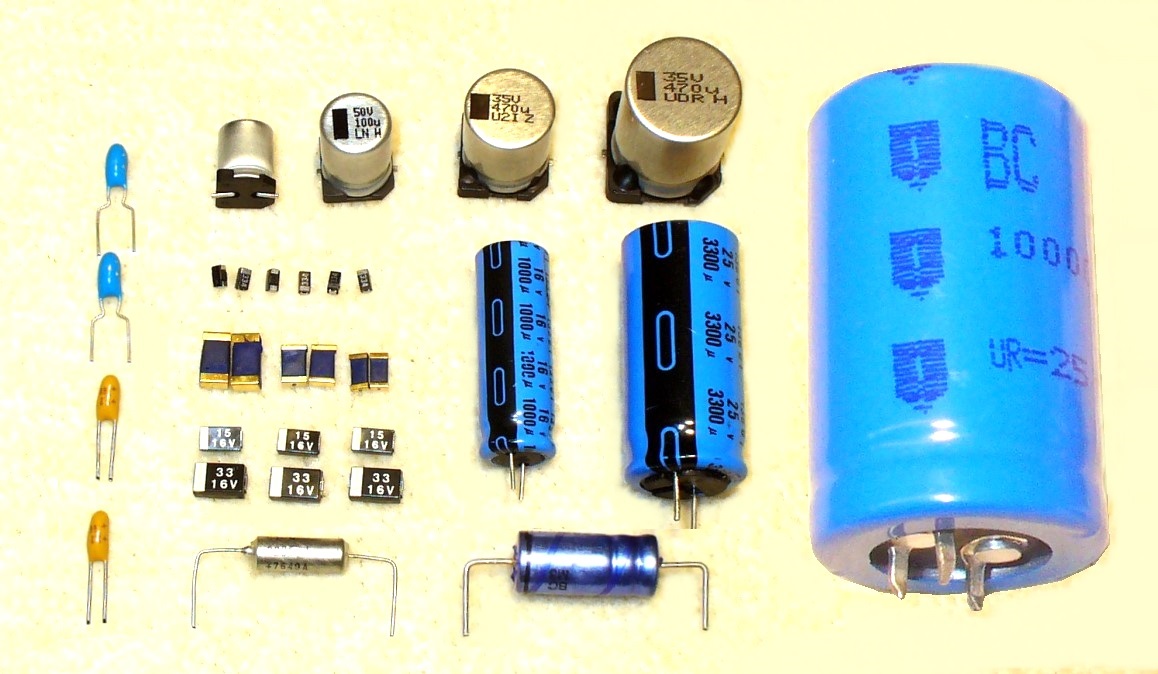
Figure 1: Various different capacitors
A capacitor is made of two electrically conductive plates placed close to each other, but they do not touch each other. The two conductive plates of the capacitor are good conductors of electricity normally made of materials such as aluminum, brass, or copper.
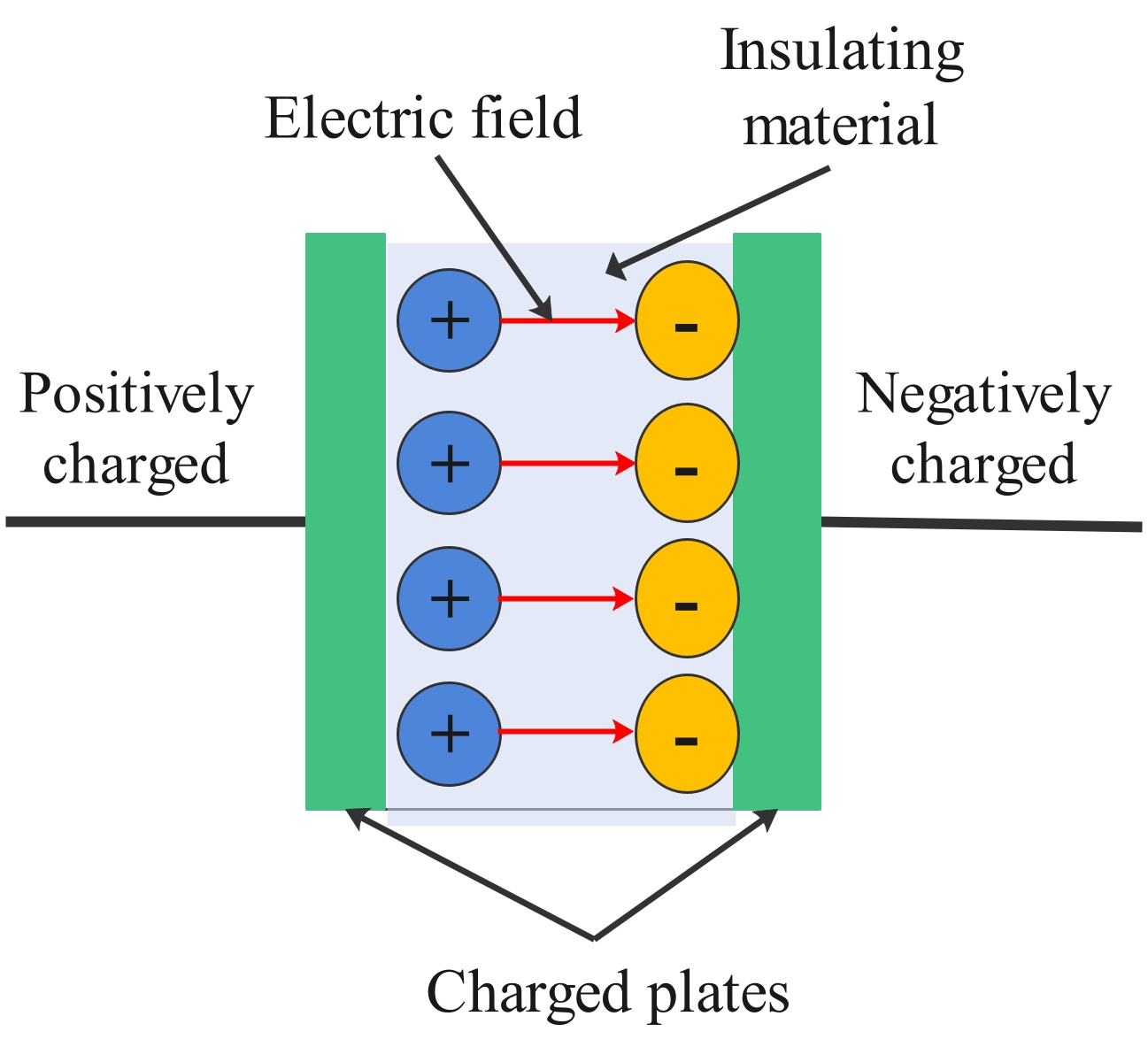
Figure 2: A capacitor diagram. One of the plates is for a positive charge while the other is for a negative charge.
The conductive plates of a capacitor is separated by a small distance. The empty space between these plates is filled with a non-conductive material or electric insulator. The non-conductive material between the two plates may be an air, vacuum, glass, liquid, or solid. They are used because they are poor conductors of electricity.
When the plates are linked to the power, the electric charge builds up on the plates. The positive charge is accumulated on one plate, while the negative charge is accumulated on the other and the electric charges flow easily from one plate to another plate. If the power source connected to the capacitor is removed, the capacitor remains charged.
Capacitors are used widely in electric circuits, and a camera flash is one application that make use of capacitors in real life. A camera requires an enormous amount of energy in a short time to produce a flash that is bright enough to light up the subject of the photograph. Just using the camera's battery is not enough to generate such a huge amount of power, which is why several capacitors are used in the camera to store the energy needed.

When the flash is used the capacitors discharge quickly and the charged particles flow towards the light bulb circuit at a rapid rate, and so generate a flashlight which illuminates the object for a few seconds.
-
-
-
The ability of a capacitor to store electric charge is called capacitance. Capacitors with high capacitance will store large amount of electric charge whereas the capacitors with low capacitance will store small amount of electric charge.
The capacitance of a capacitor can be compared with the size of a water tank: the larger the water tank, the more water it can store. In the similar way, the larger the capacitance, the more electric charge or electricity it can store.
Capacitors with different physical characteristics (such as shape and size of their plates) store different amounts of charge for the same applied voltage (V) across their plates. The capacitance (C) of a capacitor is defined as is the largest amount of charge per volt that can be stored on the device:
C=Q/V. The SI unit of capacitance is the farad (F).
Combining capacitors
Capacitors can be connected to achieve different values of capacitance.
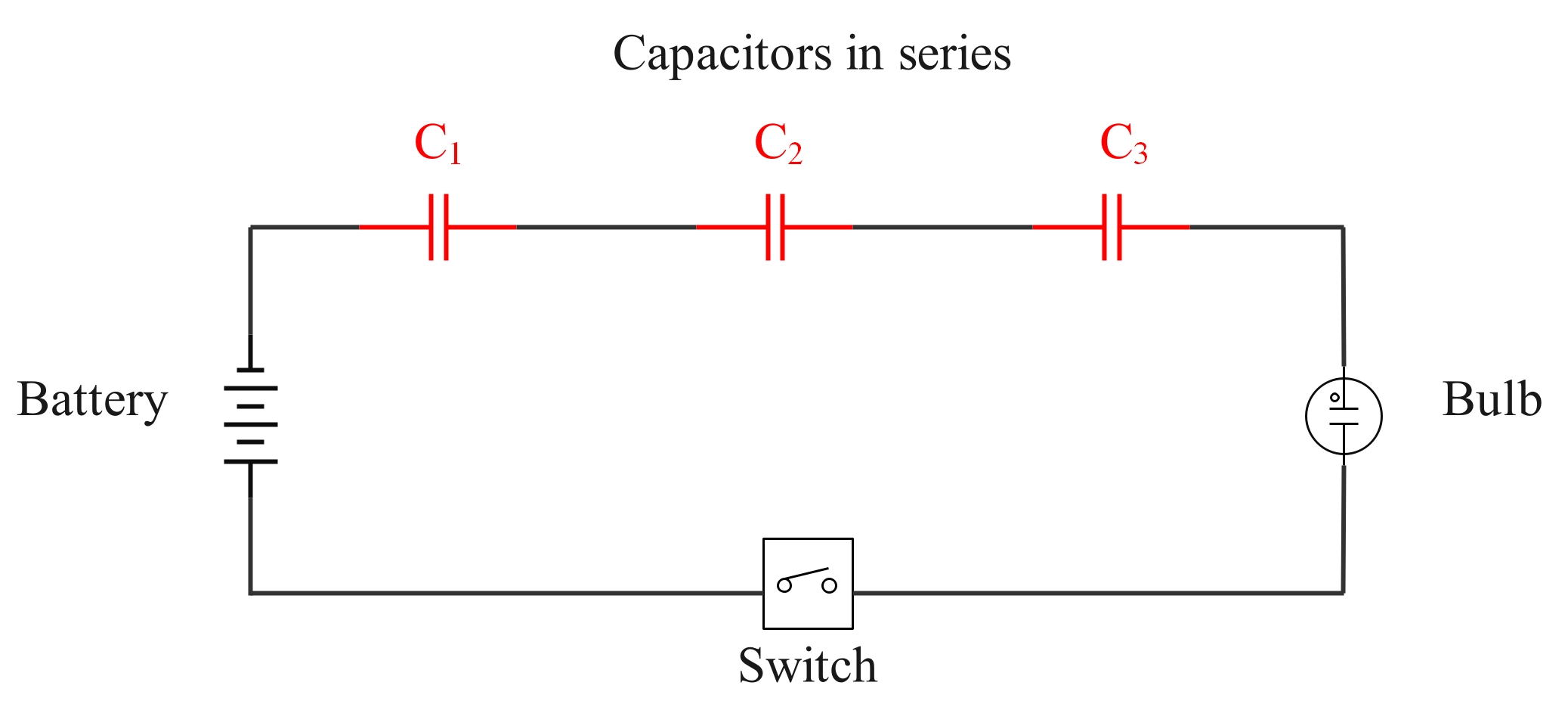
When capacitors are connected in series and to a voltage supply:
- no matter what the value of its capacitance, each capacitor in the combination stores the same amount of charge.
- the total charge stored by a series of capacitors is the charge on each of the two outer plates and is equal to the charge stored on each individual capacitor
- the total charge stored is less than the charge that would be stored by any one of the capacitors connected individually to the power supply.
The effect of adding capacitors in series is to reduce the capacitance.
When you connect capacitors in parallel, then the total capacitance will be equal to the sum of all the capacitors capacitance.
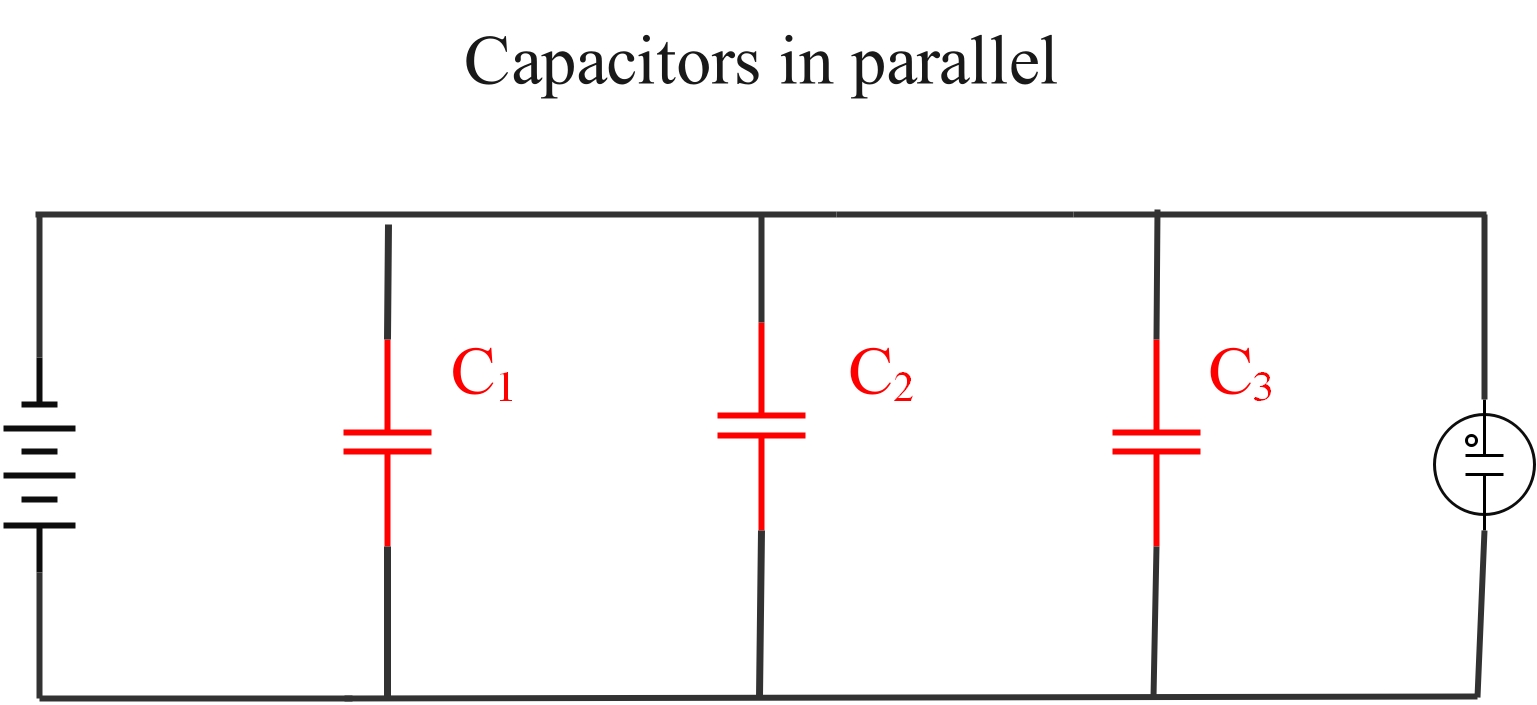
A variable air capacitor has two sets of parallel plates. One set of plates is fixed (indicated as “stator”), and the other set of plates is attached to a shaft that can be rotated (indicated as “rotor”). By turning the shaft, the cross-sectional area in the overlap of the plates can be changed; therefore, the capacitance of this system can be tuned to a desired value. Capacitor tuning has applications in any type of radio transmission and in receiving radio signals from electronic devices. Any time you tune your car radio to your favorite station, think of capacitance.
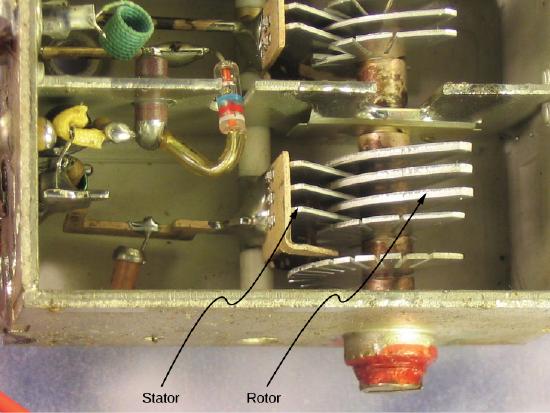
Figure 3: In a variable air capacitor, capacitance can be tuned by changing the effective area of the plates.
Energy is needed from a power supply or other source to charge a capacitor. A charged capacitor can supply the energy needed to maintain the memory in a calculator or the current in a circuit when the supply voltage is too low.
The amount of energy stored in a capacitor depends on:
- the amount of charge on the capacitor plates
- the power required to place this charge on the capacitor plates, i.e. the capacitance of the capacitor.
-
-
-
When a conductor receives excess charge, the charge will be transferred across the entire surface of the object.
If charge is transferred to the object at a given location, that charge is quickly distributed across the entire surface of the object. The distribution of charge is the result of electron movement.
Since conductors allow for electrons to be transported from particle to particle, a charged object will always distribute its charge until the overall repulsive forces between excess electrons is minimized. If a charged conductor is touched to another object, the conductor can even transfer its charge to that object. The transfer of charge between objects occurs more readily if the second object is made of a conducting material. Conductors allow for charge transfer through the free movement of electrons.
Charge Distribution in a Regularly Shaped Conductor
The atoms that make up a solid object are firmly anchored in their locations. The nuclei are not free to move around throughout a solid. However, in a conductor, the electrons can move freely from one atom to another.
Adding more electrons to a solid made of conducting material can give the object an overall negative charge.
To figure out how the new electrons will arrange themselves, we need to remember that electrons repel each other. Since electrons are free to move on a conductor, they will move to put maximum distance between themselves. They are not able to move off the conducting solid; they are bound to the object.
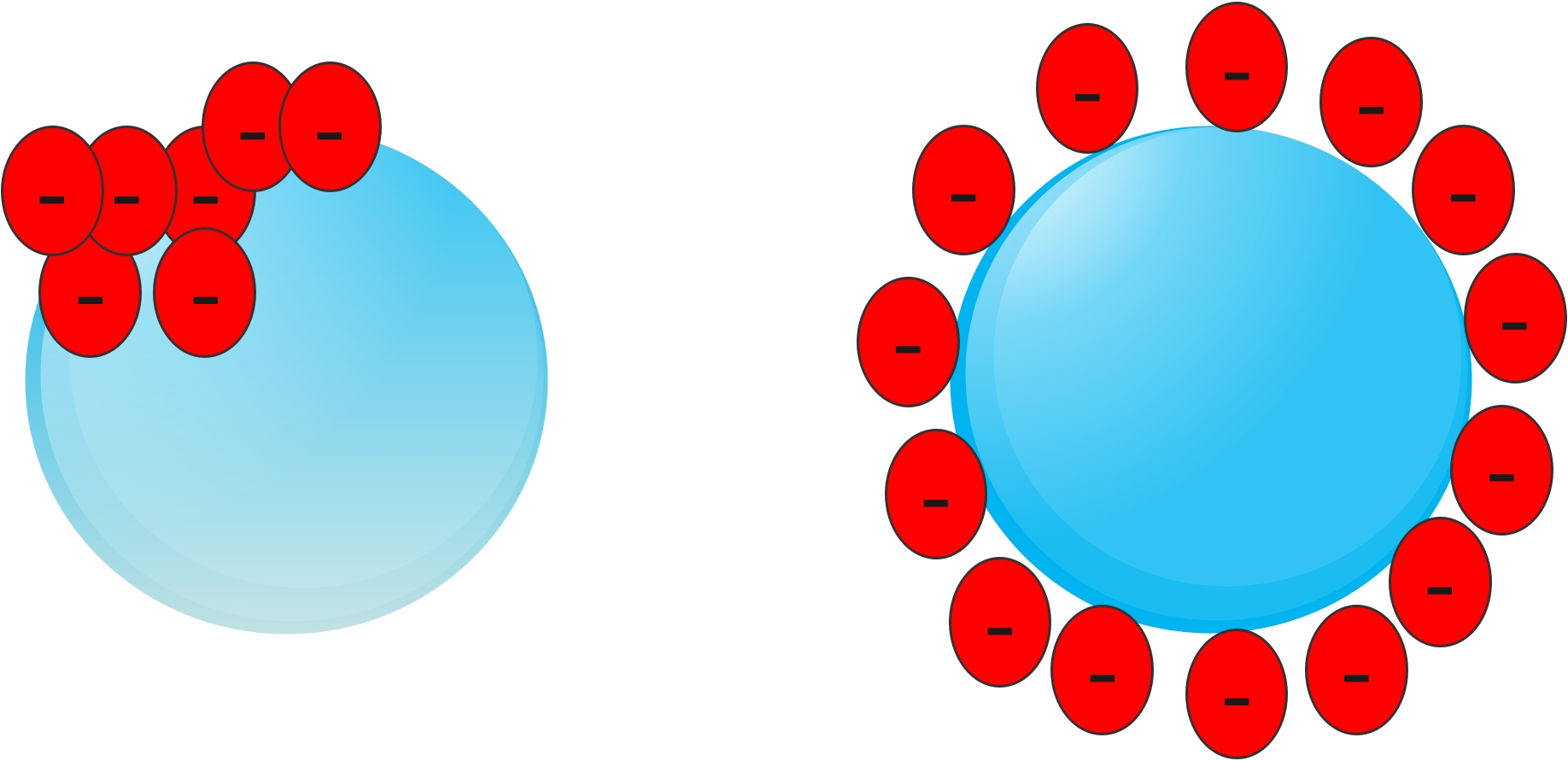
Figure 1: Electrons will move as far as possible from one another.
A conductor with a symmetrical shape will have a uniform charge distribution on its surface. For example, electrons on a cylinder will uniformly distribute themselves up and down its length and all around its circumference.
Charge Distribution in an Irregularly Shaped Conductor
On an irregularly shaped conductor like a teardrop-shaped conductor, the charges on the bottom of the teardrop-shaped conductor push other charges closer and closer to the tip until the charges on the tip pushes back with the same amount of force.
At the pointed end of the conductor, the charges on the tip must be located closer together in order to be able to push back with the same force as the charges on the other end. Therefore, the charge density at a point is greater than on other areas of a conductor. The tip, though smaller, must hold its ''share'' of the charge density to balance the forces from the charge distribution on the other end.
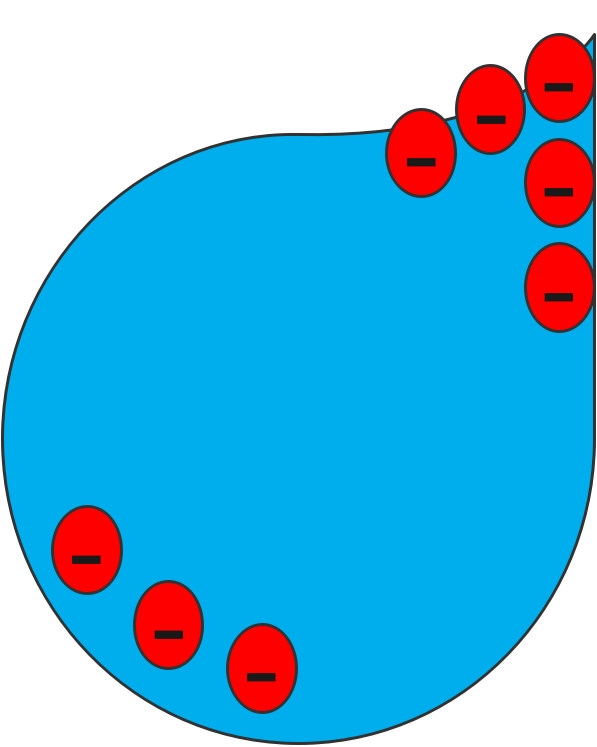
Figure 2: In an irregular shaped conductor, more charges will be distributed where the surface curves more sharply.
-
-
-
Lightning
Lightning is caused by friction between ice crystals in clouds. Charges are induced when the ice crystals move through the cloud.
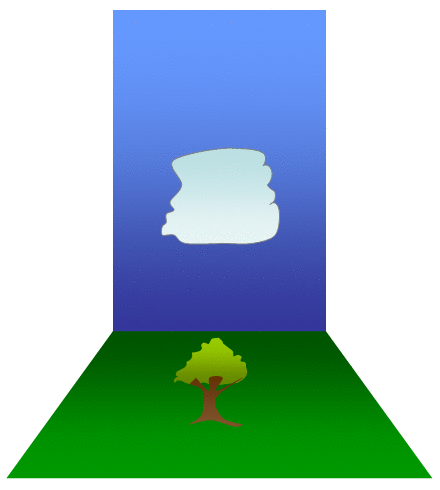
A negative charge forms at the base of the cloud where the ice crystals collects, while the lighter ice crystals remain near the top of the cloud and create a positive charge.
The negative charge is attracted to the Earth's surface and other clouds and objects. When the attraction becomes too strong, the positive and negative charges discharge, to balance the difference in a flash of lightning. The rapid expansion and heating of air caused by lightning produces the accompanying loud clap of thunder.
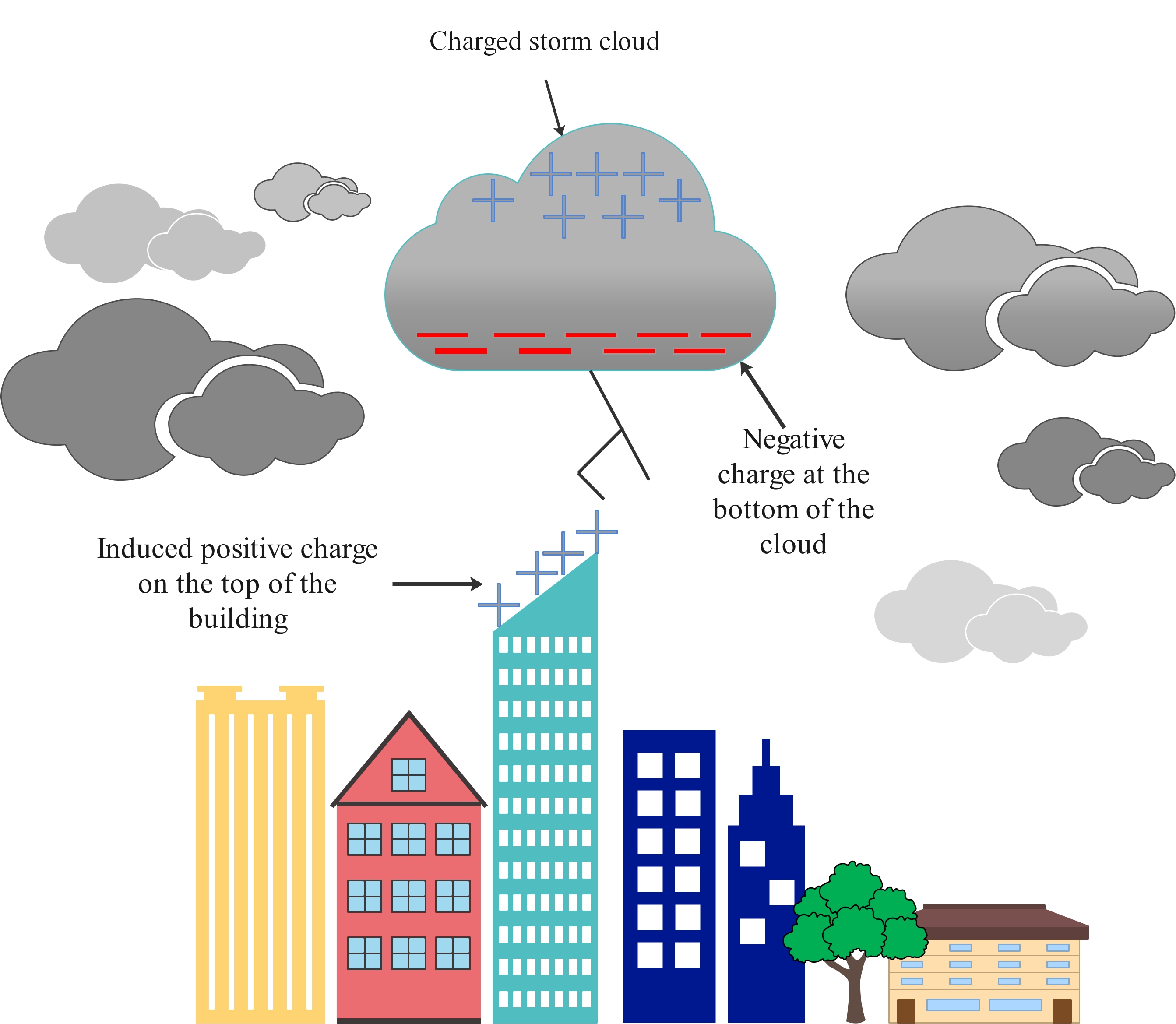
Thunderstorms are common occurrences on Earth. It is estimated that a lightning strike hits somewhere on the Earth's surface approximately 44 times every second, a total of nearly 1.4 billion lightning strikes every year.
Lightening conductors
A lightning rod or conductor is a very simple device. It is a pointed metal rod attached to the roof of a building. The rod is usually quite thin but must be taller than the building it is protecting. It connects to a huge piece of copper or aluminum wire. The wire is connected to a conductive grid buried in the ground nearby.
The purpose of lightning rods is to provide a low-resistance path to ground that can be used to conduct the enormous electrical currents when lightning strikes occur. If lightning strikes, the rod will carry the harmful electrical current away from the structure and safely to ground.
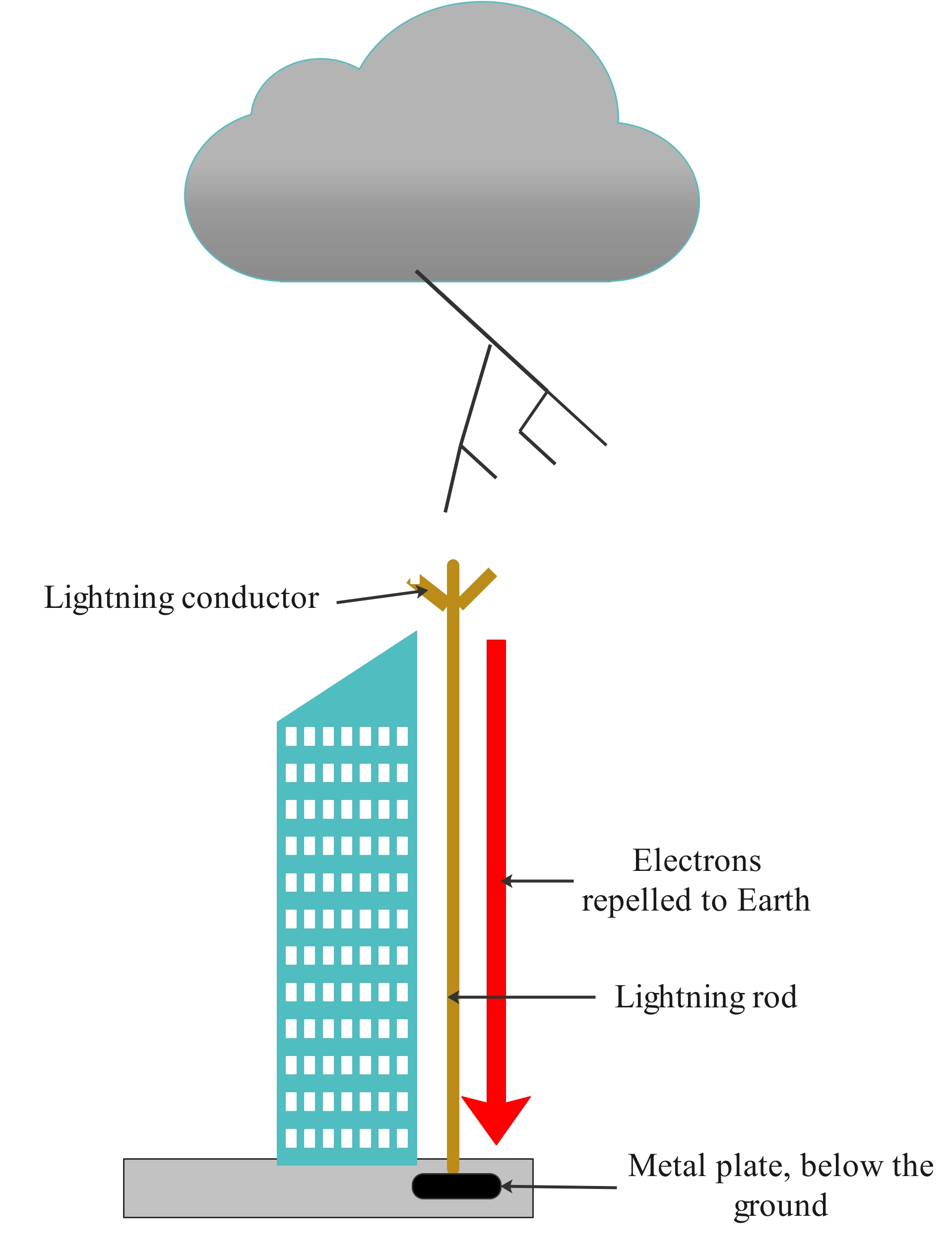
The lightning-rod system is an excellent conductor and thus allows the current to flow to ground without causing any heat damage.
Lightning can "jump around" when it strikes. When lightning strikes it will seek a path of least resistance by jumping around to nearby objects that provide the easiest path to ground. If the strike occurs near the lightning rod, the rod can divert the strike current to ground because it has a low-resistance path it.
The purpose of the lightning rod is not to attract lightning, it provides a safe option for the lightning strike to choose.
-